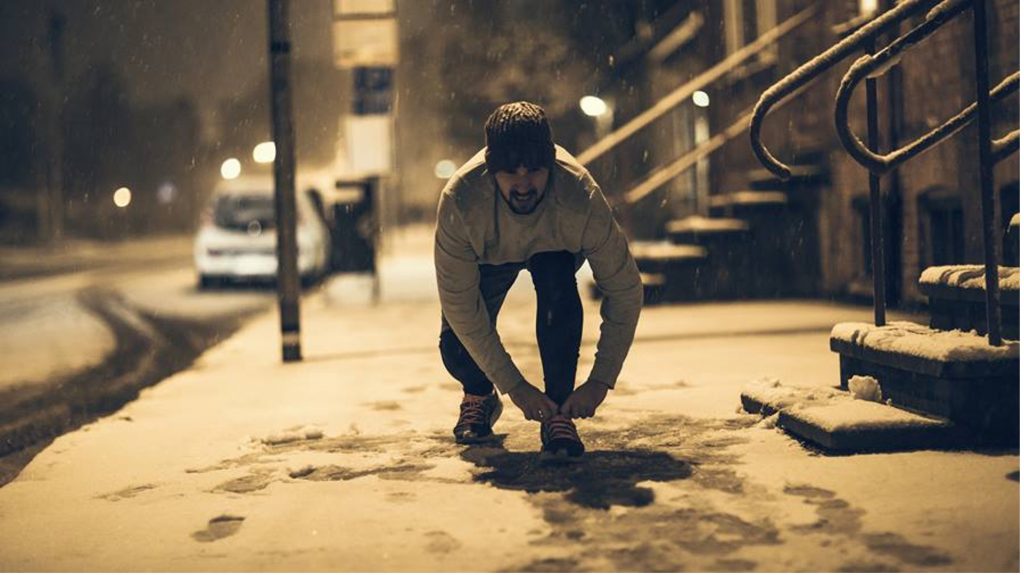- PROTECT YOUR FEET
Keeping your feet warm and dry is extremely important when exercising outside in winter. Try wearing thick wool socks and waterproof footwear with sturdy soles.
- WEAR LAYERS
Even if it’s cold, you’ll warm up faster than you might expect while exercising outside, so dress in layers. Layers trap heat against your body and protect you from dangers like frostbite and hypothermia, and they’re easy to adjust when you feel too warm.
According to the American Heart Association, you should avoid wearing cotton, because cotton actually retains moisture and can make you feel colder. Instead, opt for moisture-wicking fabrics for your base layers followed by fleece, and waterproof material (if snow is in the forecast). Wear a hat and gloves or mittens, too.
- AVOID ICY SIDEWALKS
If your usual walking or jogging route becomes icy, be careful. Slips and falls on ice and snow can lead to a range of injuries. If you need to, consider changing up your route so that you’re walking or running in areas that are better maintained, or opt for a treadmill work out on particularly cold and snowy days.
- STAY HYDRATED
Staying hydrated is just as important in the wintertime as it is in the summertime. Adequate water intake keeps your joints and other connective tissues prepared for exercise, among other benefits. So, drink plenty of water before and after your workouts.
- WEAR REFLECTIVE CLOTHING
Colder months bring shorter days. Make sure other people can see you in the early morning or late afternoon or evening by wearing reflective gear.
- PROTECT YOUR EYES
Working out in the day time? Wear sunglasses that offer broad-spectrum protection against UV-A and UV-B radiation from the sun; otherwise, these rays can bounce off the snow and ice, leading to eye “sunburn” or temporary vision difficulties.
- TELL SOMEONE WHERE YOU’RE HEADED
If you’re headed out for a run, a hike, or any other outdoor winter activity, always let someone know where you’re going and what time you should be back, then check in with them after your workout.
IS PAIN KEEPING YOU FROM EXERCISING?
Don’t let pain interfere with your exercise or daily activities. If you need help getting pain under control, please call 732- END PAIN and take your life back now!!

